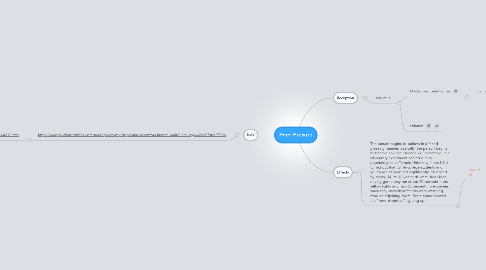
1. Reception
1.1. occurs in
1.1.1. Medial prefrontal cortex
1.1.1.1. dorphanine
1.1.1.1.1. two major sub classes
1.1.1.1.2. Gprotien coupled dopamine receptors
1.1.2. striatum
2. Effects
2.1. The person begins to behave in a friend pleasing manner. Basically, the person begins to behave how their friends would behave. In a laboratory experiment carried out by psychologists at Temple University in the US it turned out that, while college students and young adults were not significantly influenced by peers, 14- to 18-year-olds were. In a video driving game they ran about 40 per cent more yellow lights and had 60 percent more crashes when they knew their friends were watching -- from an adjoining room. Brain scans showed the “reward centres” lighting up.
2.1.1. Occurs In:
2.1.1.1. Anterior Cingulate cortex
2.1.1.1.1. Students that have stronger connections in the frontal regions of the brain, are better equipped to resist peer pressure.
2.1.1.1.2. During adolescence, the frontal lobes of the brain develop rapidly, causing axioms in the region to have a coating of fatty myelin, which insulates them and causes the frontal lobes to more effectively communicate with other brain regions. This helps the young adult to develop judgment and self-control needed to resist peer pressure.
3. links
3.1. http://www.psychiatrictimes.com/neuropsychiatry/dopamine-receptors-human-brain?_sm_byp=iVVsS7str1PfFQV
3.1.1. http://www.sciencedaily.com/releases/2011/09/110906164312.htm
3.1.1.1. http://teens.lovetoknow.com/Statistics_on_Peer_Pressure
3.1.1.1.1. http://www.mercatornet.com/family_edge/view/teenage_brains_and_peer_pressure/8657
